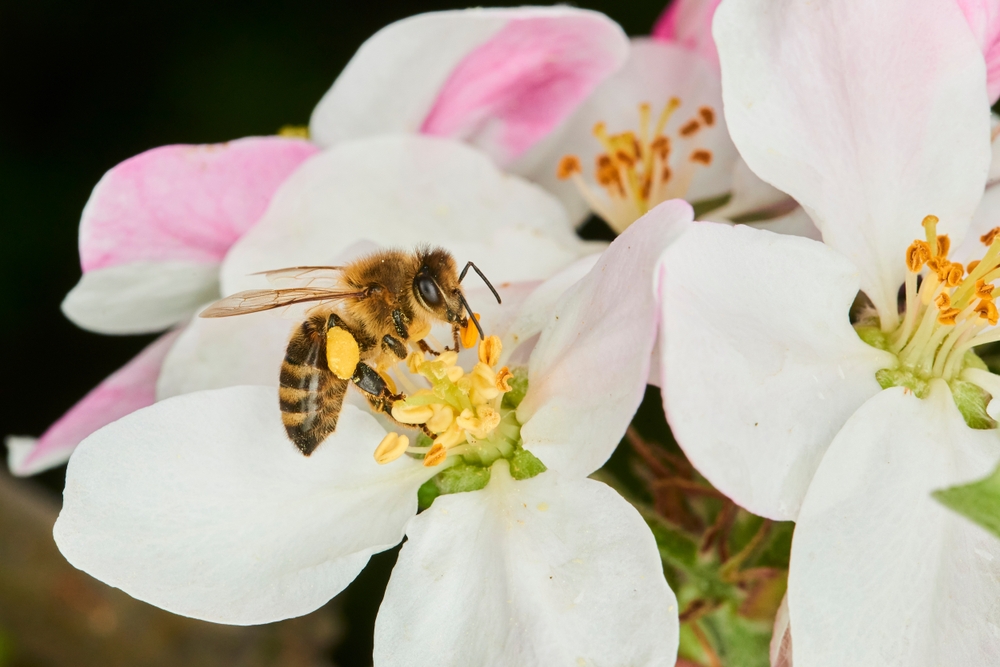Blooms with Benefits: Flowering Trees that Attract Pollinators
- 12
- May
This summer, you need a garden that hums, flutters, sips, and thrives because you picked your flowers with purpose. Pollinators are working overtime, even when you’re just sipping coffee on the porch. Your trees aren’t just landscape filler. They’re anchor points in that pollinator highway that starts in your backyard and stretches across neighborhoods.
Redbud: The Spring Signal That Wakes the Garden
It’s late March. You step outside, and your yard still looks half-asleep—then the redbud erupts. Magenta blooms straight out of the wood, not waiting for leaves, not asking for permission.
Bees are on it instantly, and not just honeybees—native bees, too. They’re starving for early nectar, and redbud’s not just a snack. It’s breakfast, lunch, and a reintroduction to life after winter.
Plant one near a walkway or patio. You’ll hear the buzz before you see the color.
Crabapple: A Full-Bloom Frenzy With Buzzing Traffic
When a crabapple tree flowers, it doesn’t ask for your attention—it hijacks it. White, pink, or deep red blossoms cover every inch. It’s like confetti, but alive.
Watch it closely and you’ll see the pollinator traffic is nonstop. Bumblebees bounce from petal to petal, hoverflies zip between clusters. You might even spot butterflies lingering longer than usual.
You want a pollinator hub? Crabapple is your airport. The nectar’s high-quality, and the pollen packs protein—that’s what pollinators are after.
Tulip Tree: The Late Spring Powerhouse That Doesn’t Care Who’s Watching
This tree doesn’t even try to be subtle. Massive leaves shaped like something from a kid’s drawing. Flowers bigger than your palm—lime green with orange flames inside.
It blooms late spring, just when early bloomers are winding down. You need that timing staggered. Gaps in nectar availability hurt pollinators more than you think, and tulip trees fill that gap.
Don’t plant it unless you’ve got space. It grows tall, fast, and throws a lot of shade.
Black Locust: The Surprise Bloom That Smells Like Dessert
Walk past a black locust in May, and you’ll think someone’s baking vanilla cupcakes. Those cascading clusters of white flowers smell unreal—and pollinators agree.
It’s a short bloom, maybe two weeks, but those two weeks are absolute chaos in the air. Every bee in a ten-block radius wants in on the action. It’s high-nutrient nectar, and the tree doesn’t skimp. Even at the edge of a yard or near a fence, it pulls pollinators in like a magnet.
Skip this one if you hate messy pods in fall. But if you care about pollinators? You’ll deal with a broom.
Dogwood: Sleek, Subtle, and Still a Pollinator Workhorse
Dogwood doesn’t shout, it whispers. Pale pink or snowy white bracts, arranged with the kind of elegance you only notice if you stop rushing.
Small bees and early butterflies love this tree. It blooms just after redbuds fade, bridging the early season like a skilled relay runner.
Put it in partial shade and let it live next to ferns and hostas. It won’t compete—it will complement, and the pollinators love it.
Catalpa: The Loud, Late-Season Statement
You want drama? Catalpa’s your headline act with its gigantic tropical-looking leaves and flowers that look like orchids. Hummingbirds hover around them like they’re defending a sugar vault.
It blooms when most spring show-offs have gone quiet—late June, sometimes July. It’s perfect for filling that floral silence when you still want movement in the garden.
The seed pods are weird—long, green, dangly things that hang around into winter. Embrace the weird because your garden needs it.
Basswood: The Tree That Throws a Party in Mid-Summer
Basswood is swarmed in bloom with tiny yellowish flowers, sweet and subtle, but loaded with sweet rewards for pollinators.
Bees go bananas for it. This is one of those trees that’s essential in urban areas because it hits during the summer lull.
Don’t be surprised if beekeepers show up asking if they can park their hives nearby. That’s how seriously attractive this tree is to your tiny winged friends.
Arbor Hills Tree Farm & Nursery Omaha
We provide the Highest Quality Field Grown Nebraska Trees and Shrubs – directly to our customers, at the lowest possible price.
Whether you are looking for trees for:
- new home landscaping
- wind blockage
- commercial or residential
Simply select the tree(s) you want, and they will be ready for pickup or delivery the following Saturday Morning. The trees are easy to handle and plant. Click here for more information.



